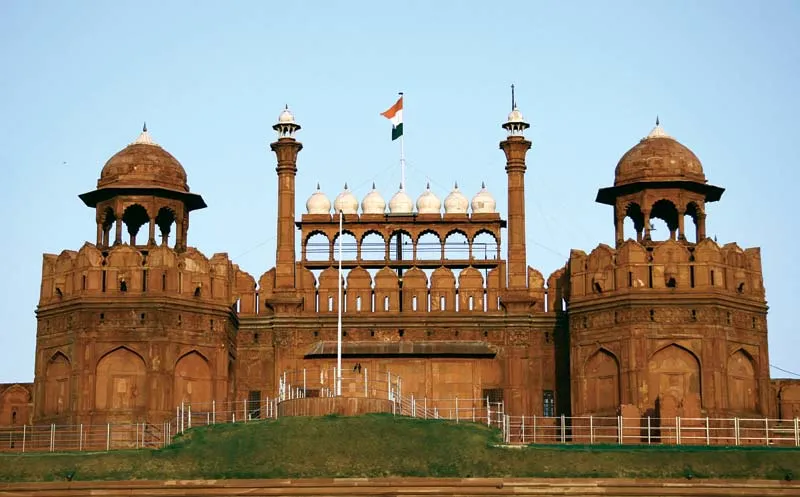The Red Fort, also known as Lal Qila, is a magnificent architectural masterpiece that stands as a symbol of India’s rich history, cultural heritage, and the power of Mughal architecture. Located in the heart of Delhi, this UNESCO World Heritage Site is a testament to the grandeur of the Mughal Empire and a site of historical and national significance.
Historical Legacy: Commissioned by the Mughal Emperor Shah Jahan in the 17th century, the Red Fort served as the main residence of the Mughal emperors for around 200 years. It was completed in 1648 and became the center of power for the Mughal dynasty, witnessing both opulence and significant historical events.
Architectural Marvel: The Red Fort’s architectural brilliance reflects a fusion of Persian, Indian, and European styles. Made of red sandstone, the fort’s massive walls, intricate carvings, and ornate domes are a testament to the artistic skill and craftsmanship of the Mughal artisans. The fort’s design is a masterpiece of symmetry and proportions.
Main Gates and Layout: The Red Fort is accessed through two main gates: the Lahore Gate and the Delhi Gate. The Lahore Gate is the main entrance and opens into Chatta Chowk, a covered market street where merchants once sold their wares. The fort’s layout consists of various palaces, halls, pavilions, and gardens that showcase the Mughal architectural and aesthetic sensibilities.
Diwan-i-Aam and Diwan-i-Khas: The Diwan-i-Aam (Hall of Public Audience) was where the Mughal emperor addressed the common people and listened to their grievances. The Diwan-i-Khas (Hall of Private Audience) was reserved for meetings with nobles and dignitaries. The stunning white marble structure within the Diwan-i-Khas, known as the “Pavilion of Private Audience,” is particularly famous for its inlaid floral designs.
Rang Mahal and Hayat Bakhsh Bagh: The Rang Mahal, or “Palace of Colors,” is a palace within the fort that once housed the emperor’s wives and mistresses. Its walls were adorned with exquisite frescoes and delicate mirror work. The Hayat Bakhsh Bagh, or “Life-Bestowing Garden,” is a serene oasis within the fort, featuring flowing water channels and lush greenery.
Independence Day Celebrations: The Red Fort holds immense national significance as the site where India’s Prime Minister hoists the national flag and delivers the Independence Day address on August 15th. This tradition commemorates India’s freedom from British colonial rule in 1947.
Conclusion: The Red Fort is not merely a historic monument; it’s a portal to India’s past, a canvas of architectural brilliance, and a symbol of the nation’s resilience and freedom. As you walk through its impressive gates, explore its intricate chambers, and admire its grand facades, the Red Fort takes you on a journey back in time, inviting you to imagine the splendor and majesty of the Mughal era.

